Have you ever wondered where some of the most comforting, down-home recipes come from? Take chocolate gravy, for instance—this Southern classic has been gracing breakfast tables for generations, yet its origins remain a bit of a mystery. Maybe you’ve asked yourself, “Who came up with the genius idea of pouring chocolate over biscuits?” or “How did something so simple become such a beloved tradition?” You’re not alone in your curiosity! Chocolate gravy solves a common craving: it’s the perfect mix of nostalgia, indulgence, and comfort all rolled into one. Whether it reminds you of mornings at Grandma’s house or you’re just discovering it for the first time, its history might just surprise you. Let’s dig into the story behind this decadent treat—you might feel even more connected to every delicious bite!
List of contents
What is Chocolate Gravy?
To begin with, chocolate gravy is a uniquely Southern creation that challenges the conventional understanding of what gravy is supposed to be. Typically, when one thinks of gravy, the mind immediately conjures images of savoury sauces made from drippings or stock. However, chocolate gravy, in stark contrast, is a sweet, luscious sauce crafted from ingredients like cocoa powder, sugar, and milk. Naturally, it is poured generously over warm, flaky biscuits, which further enhances its appeal as a breakfast delicacy or dessert. Check out more recipes here.
Furthermore, this dish is not merely about satisfying a sweet tooth; instead, it embodies the ingenuity of Southern cooking. Historically, Southern cooks were known for transforming simple ingredients into something spectacular, and chocolate gravy exemplifies this creativity. For those unfamiliar with the dish, its rich texture and indulgent taste may come as a delightful surprise.
A Unique Southern Treat
Moreover, this Southern treat holds a special place in the hearts of many who grew up in the Southern United States. Specifically, it is cherished in regions such as Arkansas, Tennessee, and Alabama, where it is often a centerpiece of weekend breakfasts. It not only represents a delicious dish but also a sense of nostalgia and connection to Southern traditions.
In addition, what makes this dish particularly remarkable is its resourcefulness. Time and again, Southern cooks have proven that limited resources do not limit flavor. Using pantry staples, they have created dishes like chocolate gravy, which stand as a testament to their culinary adaptability.
How It Differs From Traditional Gravy
On the other hand, the delicacy is vastly different from its savory counterparts. Unlike meat-based gravies thickened with roux or cornstarch, this sweet version relies on cocoa powder or melted chocolate, along with sugar and flour. These ingredients, when combined, create a glossy, velvety sauce that perfectly complements the buttery, crumbly texture of biscuits. In conclusion, chocolate gravy is less about following culinary norms and more about embracing Southern charm and ingenuity.
The Early History of Chocolate as an Ingredient
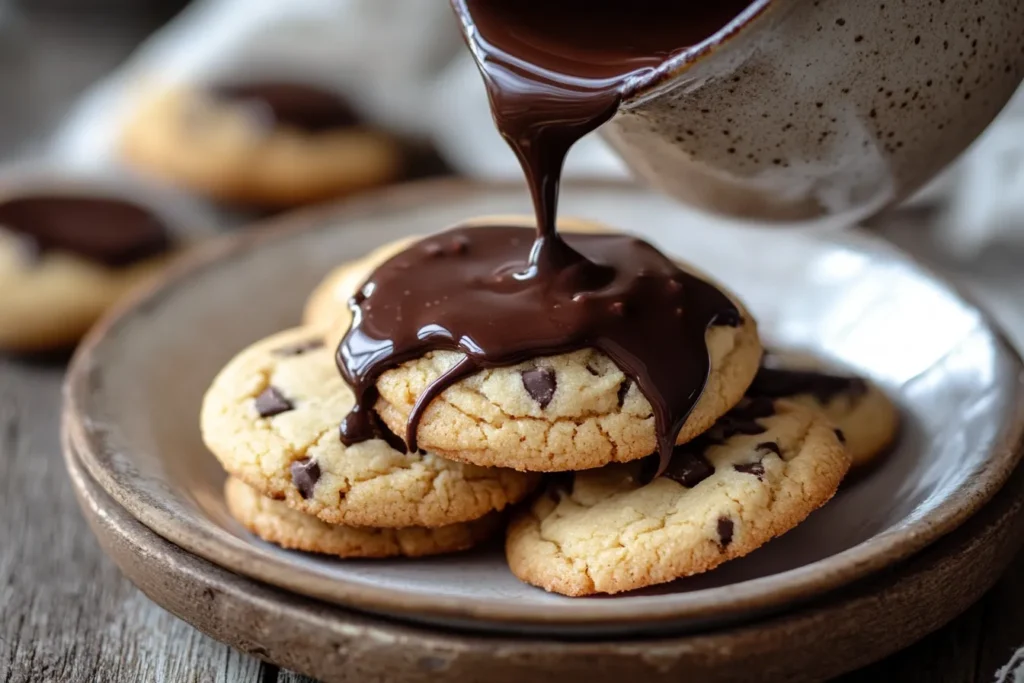
Introduction of Chocolate to Europe
First and foremost, to understand chocolate gravy, one must explore the history of chocolate itself. Initially, chocolate was discovered in the lush tropical regions of Central and South America, where it was cultivated by the Maya and Aztec civilisations. Not only was chocolate highly valued, but it was also revered, often used as a currency and consumed as a bitter drink in religious ceremonies.
Subsequently, Spanish explorers introduced cacao to Europe in the 16th century, where it quickly became a symbol of wealth and indulgence. At first, it was primarily consumed as a beverage; however, as time went on, European chefs began experimenting with it in various culinary applications. Eventually, these innovations paved the way for its use in recipes that spanned sweet and savory domains.
Chocolate in Early American Cuisine
Meanwhile, across the Atlantic, chocolate also began to gain traction in early American kitchens. During colonial times, chocolate was mostly enjoyed as a hot drink, much like its European counterpart. Gradually, however, it evolved into a more versatile ingredient in desserts and confections. For example, cakes, puddings, and even chocolate custards became staples in many American households.
Additionally, as cacao became more widely accessible, it transitioned from being a luxury item to an everyday staple. This evolution not only democratized chocolate but also opened doors for its use in creative ways, such as the eventual invention of chocolate gravy.
Transition from Beverage to Food
Notably, the 19th century marked a significant turning point for chocolate. Technological advancements in chocolate production made it more affordable and widely available. Consequently, bakers and home cooks began using it in solid and powdered forms, which revolutionized its culinary applications. In short, the transformation of chocolate from a beverage to a primary ingredient laid the foundation for recipes like chocolate gravy to emerge.
Chocolate in the Southern United States
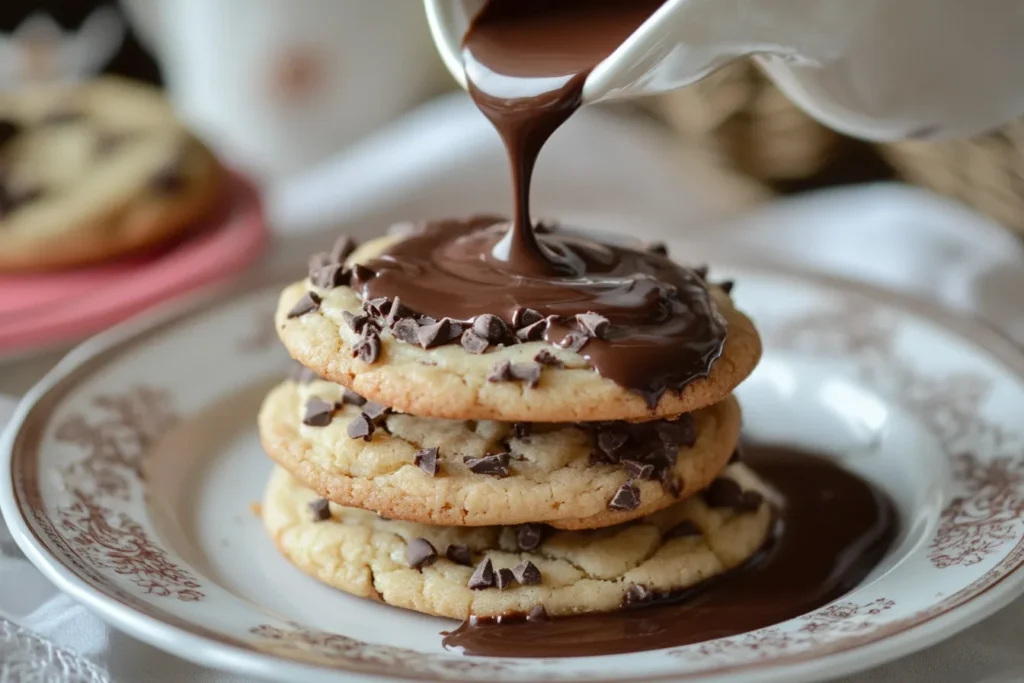
The Role of Chocolate in Southern Cooking
Furthermore, chocolate has always played a significant role in Southern cooking. From rich chocolate pies to moist fudge cakes, Southern desserts have consistently celebrated chocolate’s versatility. Chocolate gravy, in particular, represents this love affair with the ingredient, offering a simple yet indulgent way to enjoy its flavors.
Moreover, Southern cuisine is characterized by its warmth, hospitality, and focus on comfort food. This is why dishes like this one, which evoke feelings of nostalgia and home, are so deeply cherished. Whether served at family gatherings or holiday breakfasts, this dish remains a staple of Southern kitchens.
Influence of Cultural Blending in the South
At the same time, it is important to recognize the cultural influences that shaped Southern cuisine as a whole. In the South, culinary traditions are an intricate blend of African, European, and Native American influences. This melting pot of cultures not only enriched the region’s food but also played a role in the adoption of ingredients like chocolate.
For instance, European settlers brought cacao to the South, where it became intertwined with local ingredients and cooking techniques. Over time, Southern cooks, especially those in Appalachian and Ozark regions, found innovative ways to incorporate chocolate into their recipes, ultimately leading to creations like the gravy.
Evolution of Sweet Breakfast Dishes
Simultaneously, the South’s affinity for sweet breakfast dishes cannot be overlooked. Biscuits with molasses, pancakes drenched in syrup, and sugar-dusted doughnuts have long been breakfast staples. Therefore, it is no surprise that the delicacy emerged as a natural extension of this tradition. Its ability to straddle the line between a breakfast topping and a dessert sauce only adds to its widespread appeal.
Earliest Mentions of This Southern Delicacy
Historical References
Although the breakfast classic has become a Southern icon, its exact origins remain somewhat unclear. However, early mentions of the dish can be found in family cookbooks and oral histories dating back at least a century. These references provide glimpses into how this dish evolved over time.
Interestingly, many of these historical accounts suggest that chocolate gravy was often considered a treat reserved for special occasions. Families would prepare it as a way to brighten otherwise humble meals, which underscores its role as a comfort food.
Recipes Found in Family Cookbooks
In addition, the prevalence of the southern treat recipes in handwritten family cookbooks highlights its deep roots in Southern culinary traditions. These cookbooks, passed down through generations, often contained variations of the dish, reflecting the creativity and resourcefulness of Southern home cooks.
Regional Variations Over Time
Over time, as families migrated across the South, they brought their recipes with them. As a result, regional variations of chocolate gravy began to emerge. While some recipes emphasized a richer, creamier texture, others opted for a lighter sauce. In any case, these adaptations reflect the enduring appeal of this uniquely Southern dish.
Migration Patterns and Food Traditions
To understand how the delicious treat gained popularity beyond its Appalachian roots, one must first consider the historical migration patterns within the United States. During the 19th and early 20th centuries, many families from Appalachia moved westward and into neighboring Southern states in search of new opportunities. As they relocated, they brought along cherished recipes, including chocolate gravy.
Moreover, people often shared this culinary tradition at community gatherings, church events, and potlucks, which allowed it to spread organically. Through these interactions, chocolate gravy transitioned from a regional specialty to a more widespread Southern comfort food. Furthermore, the rise of Southern diners and family-owned restaurants in the mid-20th century contributed to the dish’s growing recognition.
Adoption by Other Southern States
Over time, the delicacy became a beloved staple in other parts of the South, including Mississippi, Georgia, and Texas. People embraced it not only for its simplicity but also for its ability to transform an ordinary breakfast into something extraordinary. Additionally, its versatility made it a hit among both children and adults alike, further solidifying its place in Southern culinary culture.
In addition to its presence in households, the dish began appearing in local diners and roadside eateries, where it gained a reputation as a quintessential Southern breakfast item. Today, chocolate gravy remains a cherished tradition in many of these states, often served as part of a hearty morning spread.
Modern Popularity Beyond the South
Interestingly, the appeal of chocolate gravy has begun to extend beyond its traditional Southern roots. As food bloggers and chefs explore nostalgic recipes, dishes like chocolate gravy have found new audiences. For instance, social media platforms have played a significant role in introducing this Southern delicacy to curious food enthusiasts nationwide. Consequently, the dish has seen a resurgence in popularity, with modern interpretations appearing in trendy brunch spots and even food festivals.
Key Ingredients in Traditional Recipes
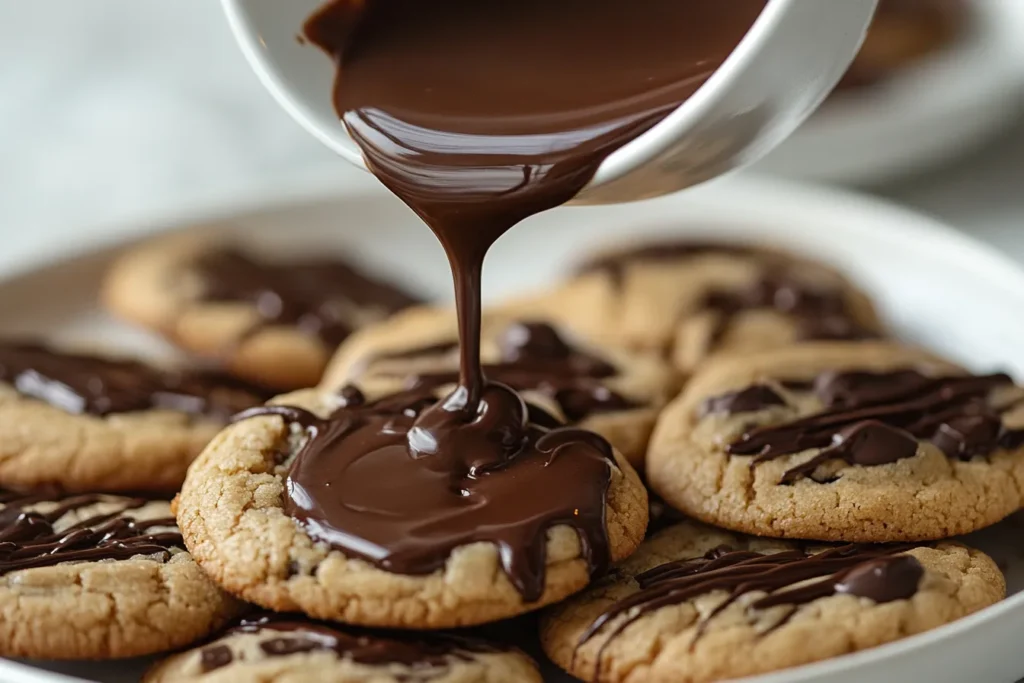
Basic Ingredients and Their History
At its core, a traditional chocolate gravy recipe requires only a handful of ingredients: cocoa powder, sugar, flour, milk, and butter. These pantry staples not only make the dish accessible but also reflect its origins in regions where resources were often scarce. Historically, families in Appalachia and the Ozarks relied on affordable ingredients to create satisfying meals, and chocolate gravy is a prime example of this ingenuity.
Additionally, the simplicity of these ingredients allows the chocolate flavor to shine. Each component serves a specific purpose: cocoa powder provides the rich, chocolatey base; sugar adds sweetness; flour acts as a thickening agent; milk contributes creaminess; and butter enhances the overall flavor.
Use of Cocoa Powder vs. Melted Chocolate
While cocoa powder is the most common choice for making chocolate gravy, some modern variations incorporate melted chocolate for added richness. However, cocoa powder remains the traditional option due to its long shelf life and affordability. Furthermore, its bittersweet flavor balances perfectly with the sweetness of sugar, creating a sauce that is both indulgent and not overly cloying.
Variations in Modern Recipes
In recent years, home cooks and chefs alike have experimented with chocolate gravy recipes, resulting in creative twists on the classic dish. For instance, some recipes include a splash of vanilla extract for added depth, while others use heavy cream instead of milk for a richer texture. Additionally, dairy-free versions made with almond milk or coconut milk have become popular among those with dietary restrictions.
Cultural Significance of Chocolate Gravy
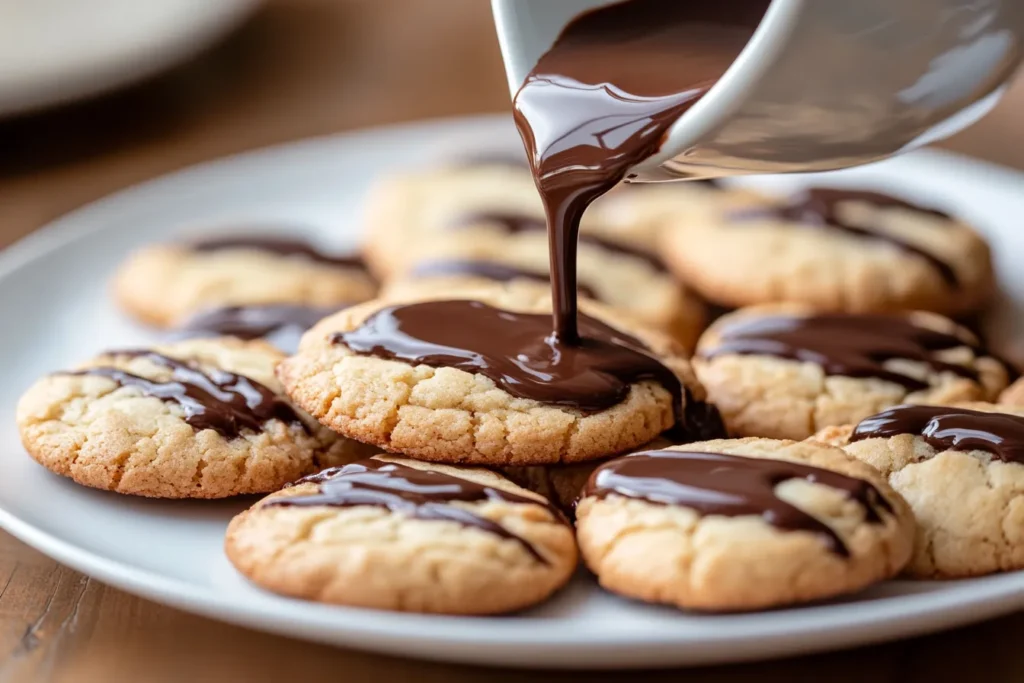
Connection to Family and Community
One cannot discuss chocolate gravy without acknowledging its cultural significance. For many families, this dish represents far more than a meal; it is a symbol of togetherness and tradition. Often prepared during holidays, weekend breakfasts, or special occasions, chocolate gravy brings loved ones together around the table.
Moreover, its role in fostering community extends beyond the home. In church gatherings, potlucks, and small-town diners, chocolate gravy serves as a reminder of the warmth and hospitality that defines Southern culture.
Role in Southern Holiday Traditions
In addition, chocolate gravy frequently takes center stage during Southern holiday celebrations. Whether served on Christmas morning alongside buttery biscuits or featured at Easter brunch, it is a dish that evokes nostalgia and comfort. Additionally, its simplicity makes it an ideal choice for large gatherings, where cooks can easily prepare it in generous quantities.
Chocolate Gravy as a Marker of Regional Identity
Furthermore, chocolate gravy has become a marker of regional identity, particularly in Appalachia and the broader Southern United States. For those who grew up with it, the dish is not only a source of pride but also a connection to their roots. Even as Southern cuisine evolves, chocolate gravy remains a beloved reminder of the traditions that continue to shape the region’s culinary heritage.
Chocolate Gravy in Popular Culture
Appearances in Literature and Media
Interestingly, literature and media often celebrate chocolate gravy as a quintessentially Southern dish, highlighting its cultural significance. Authors and filmmakers frequently use it as a symbol of Southern culture, evoking imagery of family breakfasts and small-town charm. Additionally, cookbooks dedicated to Southern cuisine often feature chocolate gravy recipes, further cementing its place in the culinary canon.
Celebration in Food Festivals
Moreover, several food festivals across the South now celebrate chocolate gravy as part of their events. These festivals not only show the dish but also highlight its historical and cultural significance. For example, attendees might participate in cooking demonstrations, taste unique variations, or learn about the dish’s Appalachian roots.
Influence on Modern Dessert Trends
Beyond breakfast, chocolate gravy has influenced modern dessert trends. Chefs now use it as a topping for ice cream, waffles, and crepes. Its mix of sweet and savory flavors fits today’s food preferences, appealing to people who love both nostalgic and creative tastes.
Is Chocolate Gravy Here to Stay?
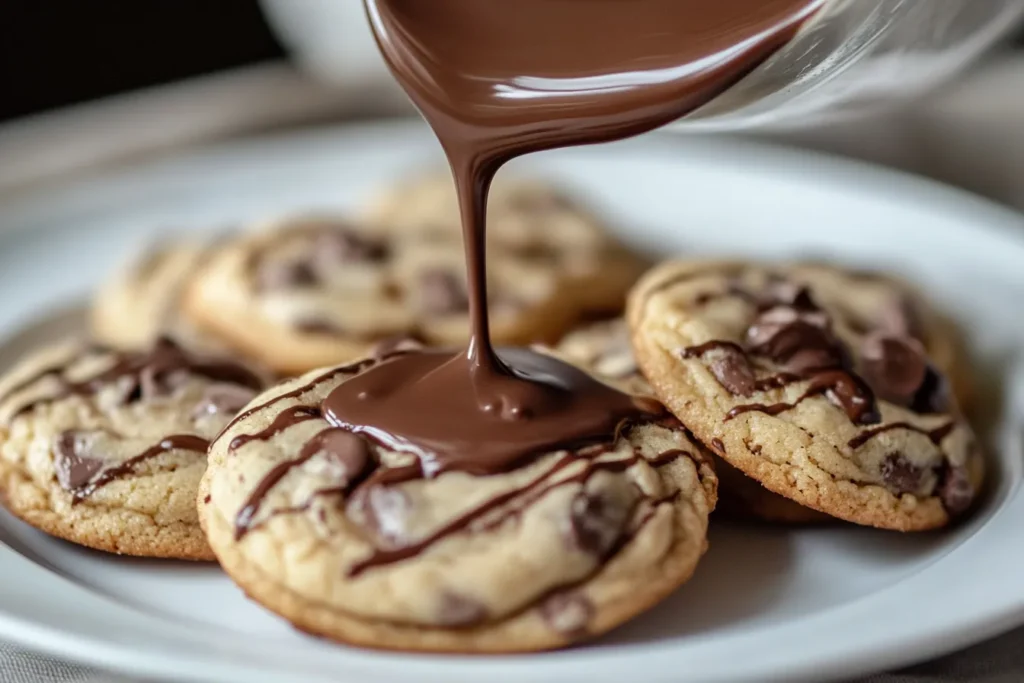
Trends in Southern Cuisine
Given the growing interest in traditional Southern cuisine, it seems likely that chocolate gravy will continue to thrive. Chefs and home cooks continue to rediscover the simplicity and charm of classic recipes, keeping dishes like chocolate gravy relevant and cherished. Additionally, its versatility ensures that it can adapt to modern tastes without losing its authenticity.
Adaptations for Health-Conscious Consumers
At the same time, changes for health-conscious eaters have made chocolate gravy easier for more people to enjoy. For example, some recipes replace sugar with natural sweeteners like honey or maple syrup, while others use almond flour for a gluten-free option. These changes show how flexible the dish is and how it can fit modern eating habits.
Future Prospects for Global Popularity
Finally, as Southern cuisine continues to gain international recognition, chocolate gravy may well find its way onto menus around the world. Its unique combination of flavors and rich history make it an appealing choice for food enthusiasts everywhere. In conclusion, the dish’s enduring popularity is a testament to its ability to bring people together, both in the South and beyond.
The History of Sweet Breakfasts Worldwide
The idea of sweet breakfasts isn’t unique to the Southern United States; it has a long history in many cultures worldwide. For example, in Europe, people have enjoyed pastries like croissants, brioche, and Danishes as part of their morning meals for centuries. Similarly, in many Asian countries, sweet rice dishes and desserts like congee with sugar are common breakfast choices. These traditions show a shared human love for starting the day with warm, comforting, and sweet foods.
In the United States, especially in the South, this idea grew into rich dishes like pancakes covered in syrup, cinnamon rolls, and, of course, chocolate gravy. These dishes became popular because they not only give a quick energy boost but also bring a sense of warmth and comfort to the start of the day.
Chocolate Gravy in the Context of Pancakes
Chocolate gravy has gone beyond its original use with biscuits and is now often enjoyed as a topping for pancakes, waffles, and other breakfast favorites. Like syrup or fruit toppings, chocolate gravy adds a smooth, rich texture that makes these dishes even more delicious. Its mix of sweet and slightly bitter flavors makes it a flexible choice for many breakfast foods.
For instance, Southern families often pour chocolate gravy over stacks of buttermilk pancakes, turning a simple meal into something indulgent and filling. This combination shows how adaptable chocolate gravy is, as it easily works with a variety of breakfast dishes.
Pairings with Other Breakfast Foods
Moreover, chocolate gravy is not limited to pancakes and biscuits. It pairs beautifully with a wide range of breakfast foods, including French toast, crepes, and even oatmeal. Additionally, some modern recipes suggest incorporating fresh fruit, such as strawberries or bananas, which provide a refreshing contrast to the richness of the gravy.
Ultimately, these pairings showcase the versatility of chocolate gravy, allowing it to be enjoyed in countless ways while remaining true to its Southern roots.
Classic Chocolate Gravy Recipe
Step-by-Step Traditional Recipe
For those eager to try chocolate gravy at home, the traditional recipe is surprisingly simple and requires minimal ingredients. Here’s a step-by-step guide:
Ingredients:
- 3 table spoons of zero sugar cocoa powder
- 3 table spoons of all purpose flour
- ¾ cup of granulated sugar
- 2 cups of milk
- 2 table spoons of butter
- 1 tea spoon of vanilla extract
Instructions:
- In a medium sauce pan, whisk together the cocoa powder, flour, and sugar until well mixed.
- Gradually add the milk, whisking constantly to avoid lumps.
- Place the sauce pan over medium heat and cook, stirring continuously, until the mixture thickens to a gravy-like consistency (about 7–10 minutes).
- Remove from heat and stir in the butter and vanilla extract until fully incorporated.
- Serve warm over biscuits, pancakes, or your favorite breakfast item.
Tips for Achieving Perfect Consistency
To make sure the gravy is smooth and silky, whisk the ingredients thoroughly and heat them slowly. Using whole milk or cream will make the gravy richer and creamier, while low-fat milk will create a thinner sauce. Most importantly, stir constantly and be patient—this helps prevent lumps and ensures the gravy cooks evenly.
Adjustments for Modern Tastes
For those looking to experiment, there are numerous ways to adapt this classic recipe. For instance, adding a pinch of cinnamon or cayenne pepper can introduce a subtle warmth, while substituting almond or oat milk creates a dairy-free alternative. Furthermore, reducing the sugar content allows the natural bitterness of the cocoa to shine, appealing to more sophisticated palates.
Variations of Chocolate Gravy
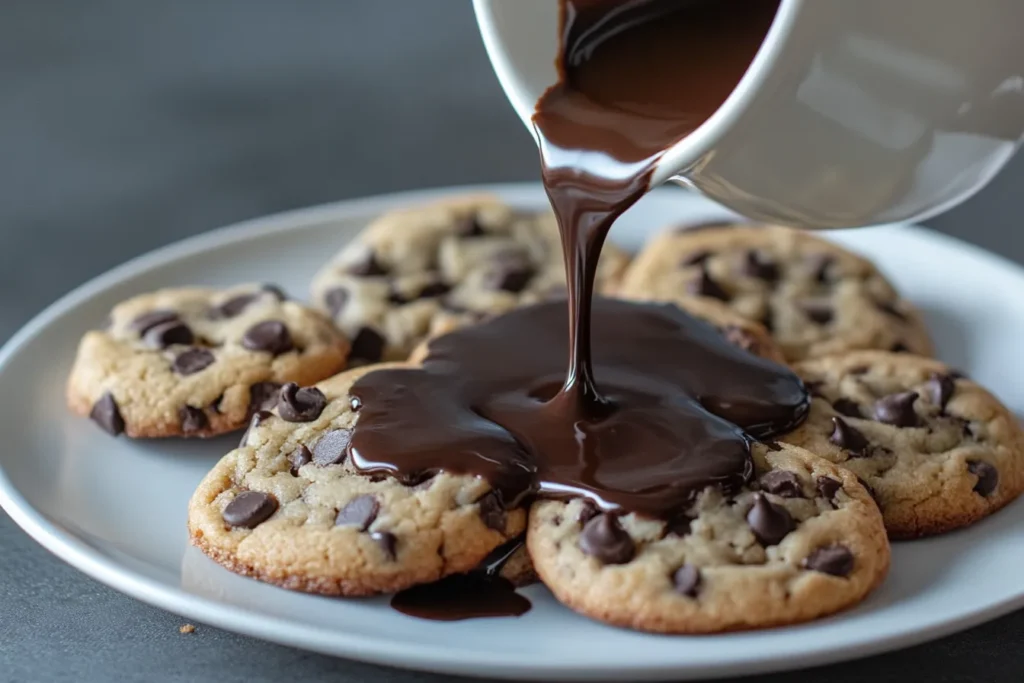
Adding Spices Like Cinnamon or Chili
Over time, cooks have begun incorporating spices such as cinnamon, nutmeg, and chili powder into chocolate gravy recipes. These additions not only enhance the flavor profile but also draw inspiration from the dish’s Mesoamerican roots, where cacao was often combined with spices.
For example, a dash of cinnamon complements the sweetness of the chocolate, while a pinch of chili powder adds an unexpected but delightful kick. These variations provide a modern twist on a classic dish, appealing to adventurous eaters and traditionalists alike.
Dairy-Free and Vegan Alternatives
As dietary preferences evolve, many cooks have adapted chocolate gravy to suit vegan and dairy free life styles. Substituting almond, soy, or coconut milk for dairy milk is a common adjustment that retains the dish’s creamy texture. Additionally, vegan butter or coconut oil can replace traditional butter, making the recipe both inclusive and delicious.
Pairing with Fruits or Nuts
Another popular variation involves incorporating fruits or nuts into chocolate gravy. Sliced bananas, fresh berries, or toasted pecans can be added as toppings, providing both flavor and texture. These additions not only elevate the dish but also introduce a touch of freshness that balances its richness.
The Sweet and Savory Balance
Understanding the Southern Palette
To fully enjoy this southern treat, it’s important to understand the Southern taste, which often blends sweet and savory flavors. Southern dishes like fried chicken with waffles or honey-glazed ham are great examples of how the region combines contrasting tastes in a delicious way. Chocolate gravy, with its sweet flavor, pairs perfectly with buttery biscuits or salty breakfast meats, creating a balance that’s both satisfying and unique.
The Importance of Sweet-Savory Contrasts in Dishes
Furthermore, this balance of sweet and savory is deeply rooted in Southern culinary traditions. By pairing rich, sweet elements with hearty, savory foods, Southern cooks create meals that are both satisfying and complex. The delicacy, whether served with biscuits or drizzled over bacon, exemplifies this approach.
The Chocolate Gravy as a Cultural Symbol
The southern goody is more than just tasty—it’s also a symbol of Southern culture. It shows the creativity and skill of Southern cooks who turn simple ingredients into something special. Because of this, it’s still a loved and important part of Southern cooking traditions.
Family Stories and Traditions
Oral Histories from Generations
For many families, chocolate gravy is more than just a recipe—it is a tradition passed down through generations. Stories of grandmothers stirring pots of chocolate gravy on Sunday mornings evoke a sense of nostalgia and connection to the past. These oral histories not only preserve the recipe but also the memories and values associated with it.
Role in Sunday Breakfasts
Sunday breakfasts are a long-standing tradition in many Southern homes, and chocolate gravy often plays a big role. Paired with biscuits, scrambled eggs, and sausage, it turns a simple meal into something special. It also brings families together, creating a feeling of joy and celebration around the breakfast table.
Chocolate Gravy as a Comfort Food
Above all, chocolate gravy is a comfort food that provides solace and joy. Whether enjoyed on a quiet morning or shared with loved ones, it offers a taste of home and a reminder of simpler times.
Comparison to Similar Dishes Globally
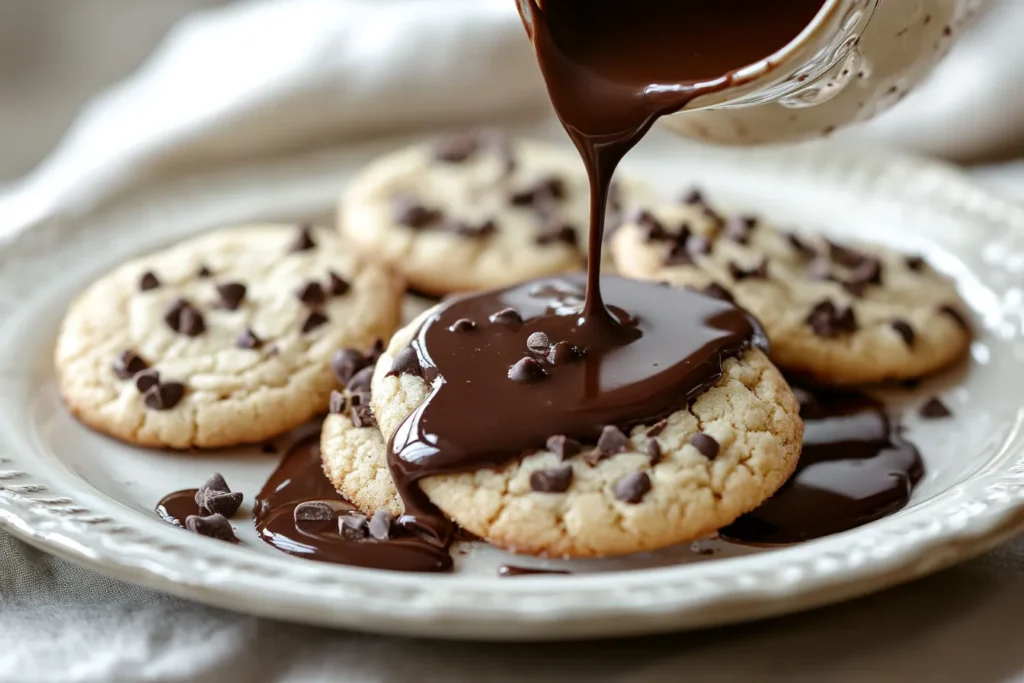
European Chocolate Sauces
Interestingly, chocolate gravy shares similarities with European chocolate sauces, such as the French chocolat chaud or Spanish churros con chocolate. However, its use as a breakfast topping sets it apart, making it uniquely Southern.
Asian and Latin American Chocolate Influences
Additionally, its flavor profile aligns with traditional Mesoamerican chocolate recipes, which often combined cacao with sugar and spices. These influences highlight the dish’s rich cultural heritage.
Unique Southern Twist of Chocolate Gravy
What makes chocolate gravy stand out is its unique Southern style. By combining chocolate with biscuits and other breakfast favorites, it turns a worldwide ingredient into a Southern classic.
Conclusion: The Legacy of Chocolate Gravy
Its Place in Southern Culinary History
In conclusion, chocolate gravy occupies a special place in Southern culinary history. Its ability to adapt and endure speaks to its timeless appeal, while its connection to family traditions ensures that it will remain a beloved dish for generations to come.
How It Continues to Unite Families and Communities
Whether served at holiday gatherings or enjoyed on a quiet morning, chocolate gravy unites families and communities through its comforting flavors and rich history.
A Dish for the Ages
In the end, chocolate gravy is more than just a recipe—it is a symbol of creativity, tradition, and Southern hospitality. Its enduring popularity ensures that it will continue to delight and inspire for years to come.
FAQs
1. What is chocolate gravy, and how is it different from other gravies?
Chocolate gravy is a sweet, rich sauce made from cocoa powder, sugar, milk, and flour. Unlike traditional savory gravies that rely on meat drippings or stock, chocolate gravy is a dessert-like topping often served over biscuits, pancakes, or waffles.
2. Where did chocolate gravy originate?
Chocolate gravy is believed to have originated in the Appalachian region of the Southern United States. Its roots are tied to families in areas like Arkansas, Tennessee, and Alabama, where cooks creatively used simple ingredients to craft this sweet treat.
3. Is chocolate gravy a breakfast or a dessert?
Although chocolate gravy is commonly served as a breakfast topping for biscuits and pancakes, it can also double as a dessert sauce. Its versatility allows it to complement a variety of dishes.
4. What ingredients are typically used in chocolate gravy?
The classic recipe for chocolate gravy includes:
- Unsweetened cocoa powder
- Granulated sugar
- All-purpose flour
- Milk (or a dairy-free alternative)
- Butter
- Optional: Vanilla extract or spices like cinnamon
5. Can chocolate gravy be made dairy-free or vegan?
Yes, chocolate gravy can easily be adapted for dairy-free or vegan diets. Substitute plant-based milk (e.g., almond or oat milk) for dairy milk, and use vegan butter or coconut oil in place of traditional butter.
6. What are some modern variations of chocolate gravy?
Cooks have introduced several creative twists to chocolate gravy, including:
- Adding cinnamon, chili powder, or nutmeg for extra flavor.
- Using melted chocolate instead of cocoa powder for a richer taste.
- Pairing it with fruits like bananas or berries for a fresh contrast.
7. How does chocolate gravy connect to Southern culture?
Chocolate gravy shows the creativity of Southern cooks, who used simple pantry items to make comforting dishes. It’s a symbol of family traditions and is closely tied to nostalgic Southern breakfasts.
8. Are there similar dishes to chocolate gravy in other cultures?
Yes, several cultures have sweet chocolate-based sauces, such as:
- France’s rich chocolate sauces for desserts.
- Spain’s thick chocolate dip for churros.
- Mesoamerican recipes that blend cacao with sugar and spices.
However, chocolate gravy’s pairing with biscuits makes it uniquely Southern.
9. Where can I try chocolate gravy outside of home cooking?
Many Southern diners, cafes, and food festivals serve chocolate gravy. Additionally, some upscale restaurants have reimagined the dish, offering it as part of modern dessert menus. Food trucks and pop-up events have also introduced it to new audiences.
10. Is chocolate gravy becoming more popular outside the South?
Yes, chocolate gravy is gaining attention across the U.S. and beyond, thanks to social media, food bloggers, and the increasing popularity of Southern cuisine. Its nostalgic appeal and versatility make it a dish with global potential.
